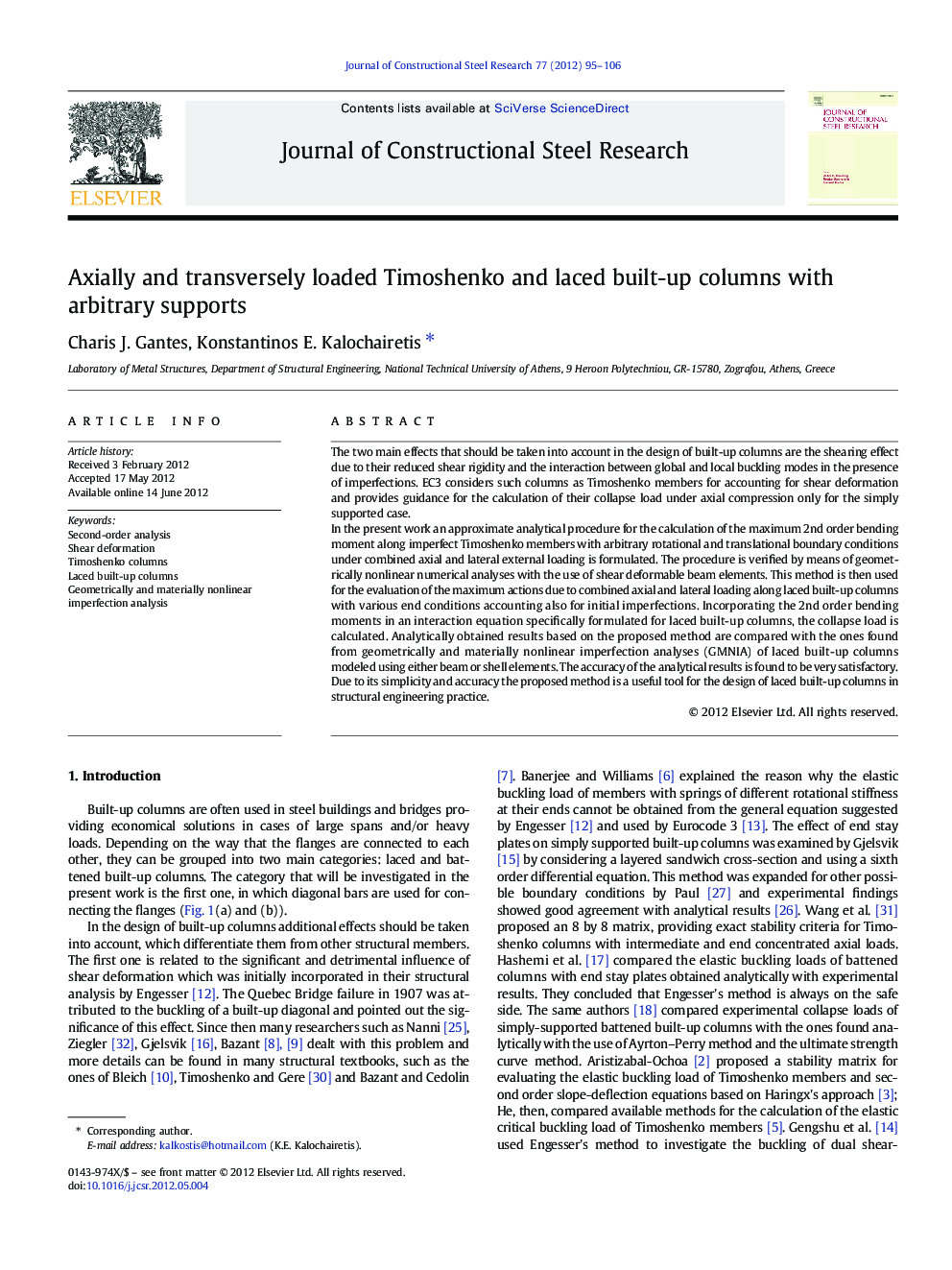| Article ID | Journal | Published Year | Pages | File Type |
|---|---|---|---|---|
| 285219 | Journal of Constructional Steel Research | 2012 | 12 Pages |
The two main effects that should be taken into account in the design of built-up columns are the shearing effect due to their reduced shear rigidity and the interaction between global and local buckling modes in the presence of imperfections. EC3 considers such columns as Timoshenko members for accounting for shear deformation and provides guidance for the calculation of their collapse load under axial compression only for the simply supported case.In the present work an approximate analytical procedure for the calculation of the maximum 2nd order bending moment along imperfect Timoshenko members with arbitrary rotational and translational boundary conditions under combined axial and lateral external loading is formulated. The procedure is verified by means of geometrically nonlinear numerical analyses with the use of shear deformable beam elements. This method is then used for the evaluation of the maximum actions due to combined axial and lateral loading along laced built-up columns with various end conditions accounting also for initial imperfections. Incorporating the 2nd order bending moments in an interaction equation specifically formulated for laced built-up columns, the collapse load is calculated. Analytically obtained results based on the proposed method are compared with the ones found from geometrically and materially nonlinear imperfection analyses (GMNIA) of laced built-up columns modeled using either beam or shell elements. The accuracy of the analytical results is found to be very satisfactory. Due to its simplicity and accuracy the proposed method is a useful tool for the design of laced built-up columns in structural engineering practice.
► Second-order analysis of Timoshenko members with arbitrary supports. ► Transverse loads and initial imperfections considered. ► Application to laced built-up columns. ► Capacity of laced built-up columns based on interaction equation. ► The proposed approach is in satisfactory agreement with finite element results.
